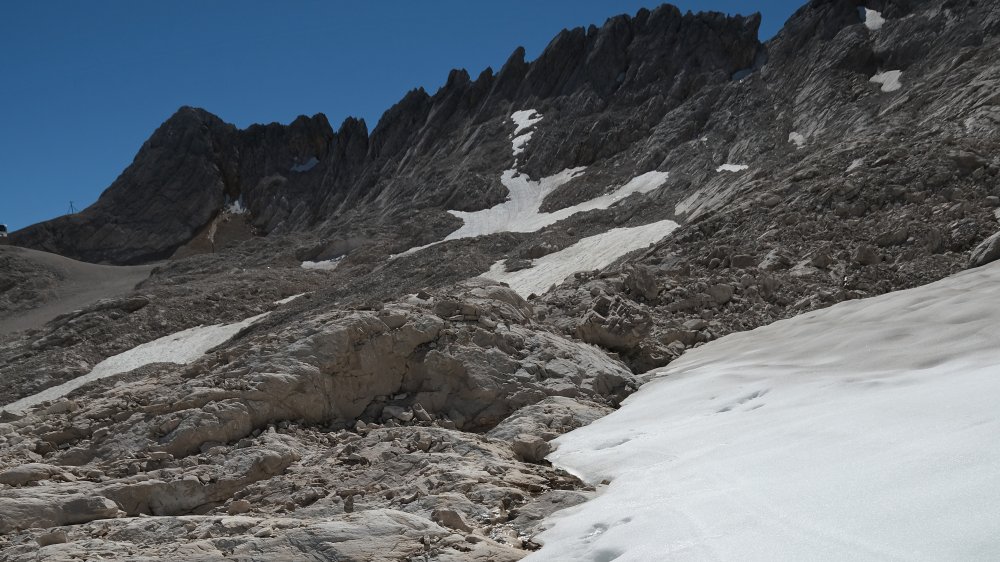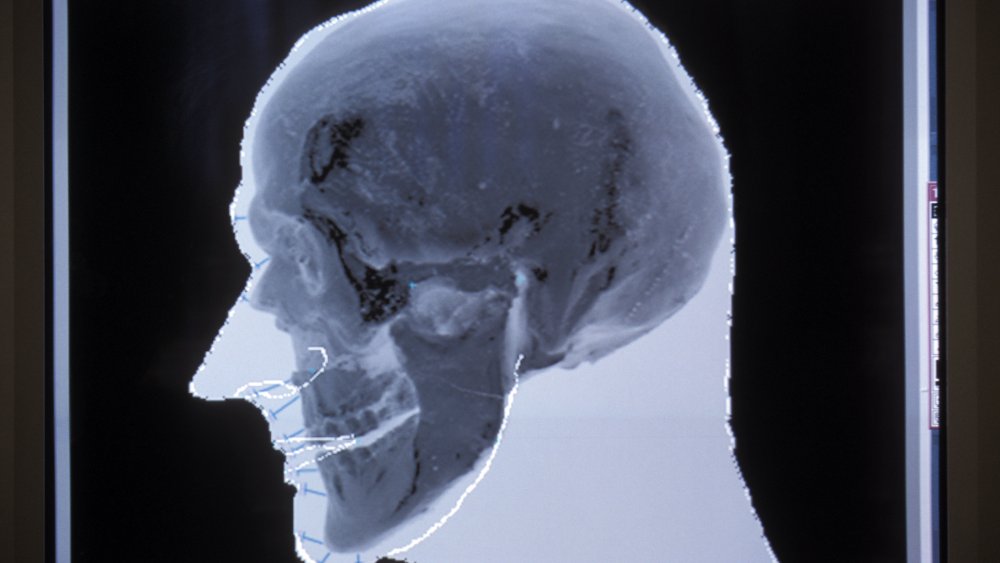The Incredible Story Of Otzi The Iceman
When you think of mummies, your mind instinctually goes to the wrapped and cured mummies discovered in ancient Egyptian tombs. Maybe you picture Brendan Fraser fighting supernatural creatures. When it comes to Otzi the Iceman, Fraser is a more accurate representation than you'd think, and it has nothing to with Egypt. Otzi was found preserved in ice, hence "Iceman," making him more the Fraser in Encino Man than the Fraiser battling Imhotep in The Mummy franchise.
Ice mummies are rare. Only a few of them have ever been discovered. The conditions have to be perfect. It must be cold enough that the body doesn't decompose but rather freeze-dries, and it has to stay cold. You aren't turning into an ice mummy just because you died in a harsh winter, and it's unlikely you'll ever become one with the speed at which the glaciers are melting around the world. There probably won't be any more Otzis, but finding this Iceman provided a window into human history rarely found before.
Stumbled upon the Iceman
The German tourists hiking the Alps on September 19, 1991, didn't know they were about to stumble upon a magnificent and equally terrifying sight: the mummified remains of an ancient man. Otzi was discovered entirely on accident. See, for the past 5,300 years, he'd been stuck in glacial ice that dehydrated his flesh and preserved his remains. Well, glaciers melt and Otzi was free at last.
Otzi had some pretty bad luck, as you would assume with anyone encased in ice for millennia, or maybe he would stop with the Pauly Shore quotes like his modern Iceman brethren. Either way, someone didn't like him much. Otzi the Iceman was a victim of murder. For a decade, Otzi was believed to have succumbed to exhaustion or the harsh climate of the Alps while attempting to cross them, but an x-ray in 2001 changed all that, according to Britannica. An arrowhead was found in the Iceman's left shoulder, showing he'd been attacked recently and was likely the cause of his death. Live Science says he also had defensive wounds on his hands along with a head injury.
Otzi teaches us more than we imagined
Before his death, Otzi lived during the Bronze Age. Meaning copper was being extracted and formed into weapons. It was a fairly new process to Europe at the time, but Otzi managed to have a rare bronze ax. His discovery has taught us a few things about humans of the time, and even more about Otzi himself.
The gear that Otzi was found with gives us some idea as to what travelers carried during his day. This includes a robe made from the skins of wild deer and wild goats, a flint knife, woven grass cloak, boots made of leather and grass, and a yew bow with arrows. He also carried a wooden U-frame that worked kind of like a backpack and a grass net that was used similarly to a sack. According to Britannica, Otzi also shows signs of the earliest known hair cut and has blue lines on his skin that may indicate the first tattoos or scars from a medical procedure lost to history.
Recently discovered moss samples indicate, according to Live Science, that Otzi may have used the substances medicinally, such as to staunch the bleeding from his wounds. While other mosses may have been used to preserve meat. They also show us, based on growth location for some of the mosses, that Otzi likely climbed 7,000 feet in elevation within the 36 hours before his death. Meaning he was already fatally wounded for part of the climb.


